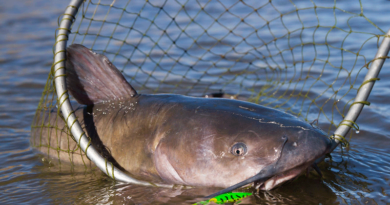The Ultimate Guide to Missouri Lawn Care: Achieving a Picture-Perfect Yard
Welcome, fellow lawn enthusiasts! If you’re a Missouri resident on a quest for the perfect lawn, you’ve come to the right place. In this comprehensive guide, we’ll delve into the world of Missouri lawn care, providing you with the tips, tricks, and expert advice you need to achieve a lush, green yard that’s the envy of your neighbors. So, let’s dive in and explore the secrets to maintaining a healthy, vibrant lawn in the Show-Me State!
Know Your Grass Type
Understanding the grass types best suited for Missouri’s climate is crucial for proper lawn care. The state’s diverse weather conditions favor cool-season grasses such as Kentucky Bluegrass, Tall Fescue, and Fine Fescue, as well as warm-season grasses like Zoysia and Bermuda.

Kentucky Bluegrass
Kentucky Bluegrass is a popular cool-season grass choice for Missouri lawns, thanks to its fine texture, rich green color, and ability to recover quickly from damage. It forms a dense turf that can withstand moderate foot traffic and thrives in sunny areas. Although it may require a bit more maintenance than other grass types, its aesthetic appeal makes it a favorite among homeowners.
Tall Fescue
Tall Fescue is another cool-season grass that’s well-suited for Missouri’s climate. It’s known for its drought tolerance and deep root system, which allows it to handle the region’s hot summers better than some other cool-season grasses. Tall Fescue is relatively low-maintenance, resistant to pests and diseases, and can grow in a variety of soil types. It performs well in both sun and shade, making it a versatile option for many yards.
Fine Fescue
Fine Fescue is a group of cool-season grasses that includes creeping red fescue, chewings fescue, hard fescue, and sheep fescue. These grasses are valued for their fine texture, shade tolerance, and ability to grow in poor, dry soils. While not as wear-resistant as Kentucky Bluegrass or Tall Fescue, Fine Fescues can be an excellent choice for low-traffic areas, shady spots, or lawns with less-than-ideal soil conditions.
Zoysia
Zoysia is a warm-season grass that’s becoming increasingly popular in Missouri due to its heat and drought tolerance. It forms a dense, carpet-like turf that can choke out weeds and handle heavy foot traffic. Zoysia is slow to establish, but once it takes root, it requires minimal maintenance and provides a lush, green lawn throughout the summer months. Keep in mind that Zoysia will go dormant and turn brown during the winter, but it will green up again when temperatures rise in the spring.
Bermuda
Bermuda grass is another warm-season option for Missouri homeowners. It’s known for its aggressive growth, heat tolerance, and ability to withstand heavy use. Bermuda grass requires full sun and may struggle in shaded areas. Like Zoysia, it goes dormant in the winter, but its rapid growth and resilience make it an excellent choice for high-traffic lawns or sports fields.
Choosing the right grass type for your Missouri lawn is crucial for long-term success. Consider factors such as sun exposure, soil type, and your desired level of maintenance when selecting the perfect grass for your yard.
Timing is Everything: Seeding and Overseeding
To maximize your lawn’s potential, it’s essential to seed or overseed at the right time. For cool-season grasses, early fall is ideal, while warm-season grasses thrive when planted in late spring or early summer.

Seeding Cool-Season Grasses
For cool-season grasses like Kentucky Bluegrass, Tall Fescue, and Fine Fescue, the ideal time to seed your lawn is in early fall (late August to early October). During this period, the soil temperatures are still warm enough to promote germination, while the cooler air temperatures reduce the chances of weed competition. Additionally, the ample rainfall in fall helps keep the soil moist, providing a conducive environment for your new grass to establish strong roots before the winter sets in.
Seeding Warm-Season Grasses
When planting warm-season grasses such as Zoysia and Bermuda, the best time to seed is in late spring or early summer (mid-May to early June). This timing ensures that the soil temperatures are high enough for optimal germination and allows the grass to establish itself before the peak heat of summer. Keep in mind that warm-season grasses grow more slowly than cool-season grasses, so it’s essential to give them plenty of time to become well-established before cooler temperatures arrive in the fall.
Overseeding Cool-Season Lawns
Overseeding is the process of adding new grass seed to an existing lawn to improve its density, fill in bare spots, and enhance its overall appearance. For cool-season lawns, the best time to overseed is in early fall, coinciding with the ideal seeding window for these grass types. This allows the new seedlings to take advantage of the favorable growing conditions and establish themselves before winter.
Overseeding Warm-Season Lawns
If you have a warm-season lawn that needs overseeding, it’s best to do so in late spring or early summer. This timing ensures that the new grass seedlings have enough time to establish themselves before the peak heat of summer, which could stress or damage the young plants. Keep in mind that overseeding a warm-season lawn with another warm-season grass may require more frequent watering during the establishment period to prevent the seedlings from drying out.
Preparing for Seeding or Overseeding
Before seeding or overseeding your lawn, take some time to prepare the area to ensure the best possible results. Start by mowing your existing grass to a slightly lower height than usual, and remove any debris, such as leaves or twigs. If your soil is compacted, consider aerating your lawn to improve air, water, and nutrient penetration.
Next, assess your soil quality and fertility. Conduct a soil test to determine if any nutrients are lacking, and apply the appropriate amendments or fertilizers as needed. Finally, choose high-quality grass seed that’s well-suited to your region and lawn conditions.
Seeding and Overseeding Techniques
When seeding or overseeding, it’s essential to distribute the grass seed evenly for uniform coverage. You can use a broadcast spreader or a drop spreader for larger areas, or hand-seed smaller patches. Be sure to follow the recommended seeding rate for your chosen grass type to avoid overcrowding or thin coverage.
After spreading the seed, lightly rake the area to incorporate the seed into the soil and ensure good seed-to-soil contact. Water the seeded area gently but thoroughly, keeping the soil consistently moist during the germination and establishment period. You may need to water more frequently during the first few weeks, gradually reducing the frequency as the new grass becomes established.
Understanding the importance of timing when seeding or overseeding your lawn is crucial to achieving a lush, healthy yard. By choosing the right grass type and planting at the optimal time, you can set the stage for a beautiful lawn that will thrive in Missouri’s unique climate.
Soil Testing and Fertilization
A healthy lawn starts with healthy soil. Conduct a soil test to determine your yard’s pH levels and nutrient needs, then fertilize accordingly. Generally, cool-season grasses benefit from fertilization in spring and fall, while warm-season grasses prefer fertilization in late spring or early summer.

The Importance of Soil Testing
Before you begin any lawn care regimen, it’s crucial to understand the composition and nutrient levels of your soil. A soil test provides valuable information about your yard’s pH levels, nutrient deficiencies, and overall soil quality. With this knowledge, you can tailor your fertilization and soil amendment efforts to address your lawn’s specific needs, ensuring that your grass receives the proper nutrients for optimal growth.
How to Conduct a Soil Test
To conduct a soil test, collect multiple soil samples from different areas of your lawn, at a depth of about 4-6 inches. Combine these samples in a clean container, mix them thoroughly, and allow the soil to dry. You can then send the sample to a local extension office, a private lab, or use a home soil testing kit. Be sure to follow the instructions carefully to ensure accurate results! 🙂
Interpreting Soil Test Results
Your soil test results will provide information on your soil’s pH level, as well as the levels of key nutrients such as nitrogen, phosphorus, and potassium. Most grass types prefer a slightly acidic to neutral soil pH, ranging from 6.0 to 7.0. If your soil pH is too low (acidic), you may need to apply lime to raise it. Conversely, if your soil pH is too high (alkaline), you can lower it by applying sulfur or other soil amendments.
Fertilization Recommendations
Based on your soil test results, you can create a tailored fertilization plan for your lawn. The three primary nutrients required for healthy grass growth are nitrogen (N), phosphorus (P), and potassium (K). Each grass type has specific nutrient requirements, which will dictate the type and amount of fertilizer you should apply.
Fertilizing Cool-Season Grasses
For cool-season grasses like Kentucky Bluegrass, Tall Fescue, and Fine Fescue, the ideal time to fertilize is during the spring and fall when the grass is actively growing. Apply a balanced fertilizer containing nitrogen, phosphorus, and potassium, following the manufacturer’s recommendations and your soil test results. Avoid fertilizing during the hot summer months, as it may cause unnecessary stress to your lawn.
Fertilizing Warm-Season Grasses
Warm-season grasses like Zoysia and Bermuda benefit from fertilization in late spring or early summer when they begin to actively grow. Use a fertilizer with a higher nitrogen content to promote vigorous growth and a deep green color. Be cautious not to over-fertilize, as excessive nitrogen can lead to thatch buildup and increased susceptibility to pests and diseases.
Soil testing and proper fertilization are essential components of a successful lawn care plan. By understanding your lawn’s specific nutrient requirements and following a tailored fertilization schedule, you can provide your grass with the necessary nutrients for optimal health and appearance.
Mowing and Maintenance:
The Art of the Perfect Cut Mowing your lawn at the correct height and frequency is vital for promoting strong roots and preventing weeds. As a rule of thumb, never remove more than one-third of the grass blade during a single mowing session.

Mowing Height: Finding the Sweet Spot
One of the most critical aspects of lawn care is mowing your grass at the proper height. Each grass type has a recommended mowing height range that promotes healthy growth and discourages weed invasion. For example, Kentucky Bluegrass typically thrives at a height of 2.5-3.5 inches, while Zoysia performs best at 1-2 inches. Be sure to research the ideal mowing height for your specific grass type and adjust your mower accordingly.
The One-Third Rule
When mowing your lawn, adhere to the “one-third rule.” This guideline states that you should never remove more than one-third of the grass blade’s length during a single mowing session. Cutting off too much of the grass blade can stress the plant, reduce root growth, and make your lawn more susceptible to pests, diseases, and drought. By following the one-third rule, you encourage stronger, healthier grass with deeper root systems.
Mowing Frequency
The frequency of your mowing sessions depends on the growth rate of your grass and the time of year. During peak growing seasons (spring for cool-season grasses and summer for warm-season grasses), you may need to mow more frequently to maintain the ideal height. As a general rule, mow your lawn as needed to comply with the one-third rule, rather than adhering to a strict schedule.
Mower Maintenance
A well-maintained mower is essential for proper lawn care. Regularly inspect your mower for any signs of wear or damage, and clean the undercarriage to remove any grass clippings or debris. Additionally, be sure to sharpen your mower blades at least once per season. Dull blades can tear the grass, leaving it vulnerable to diseases and pests.
Mulching vs. Bagging
When mowing your lawn, consider using a mulching mower, which returns grass clippings back to the lawn. These clippings decompose quickly, providing valuable nutrients to your soil and reducing the need for additional fertilization. However, if your lawn has a buildup of thatch or if the grass is excessively tall, bagging the clippings may be necessary to avoid smothering the grass beneath.
Proper Lawn Edging
For a polished and well-manicured appearance, edge your lawn along sidewalks, driveways, and planting beds. Use a string trimmer or an edging tool to create a clean, defined line between your lawn and these areas. Be cautious not to damage the grass or surrounding surfaces, and maintain these edges throughout the growing season for a professional-looking lawn.
Proper mowing and maintenance practices are vital for a healthy, attractive lawn. By following the recommended mowing heights, adhering to the one-third rule, and maintaining your mower, you can ensure your lawn stays lush, green, and thriving throughout the year.
Watering Wisdom: Keep Your Lawn Hydrated
Keep Your Lawn Hydrated Proper watering techniques can make or break your lawn’s health. For best results, water your lawn deeply and infrequently, providing about one inch of water per week, either through rainfall or supplemental irrigation.
The Importance of Proper Watering
Adequate and consistent watering is crucial for maintaining a healthy, vibrant lawn. Grass requires water to carry out essential physiological processes and to maintain cell structure. Insufficient watering can lead to shallow root systems, reduced stress tolerance, and an increased vulnerability to pests and diseases.
How Much Water Does Your Lawn Need?
As a general guideline, most lawns require about 1 to 1.5 inches of water per week, including rainfall. However, this amount can vary depending on factors such as grass type, soil composition, and local climate conditions. It’s essential to monitor your lawn’s health and appearance to determine if adjustments to your watering regimen are necessary.
Deep, Infrequent Watering
Instead of frequent, shallow watering, aim for deep, infrequent watering sessions to encourage deeper root growth and improved drought tolerance. Water your lawn once or twice a week, applying enough water to moisten the soil to a depth of 6-8 inches. This method allows the grass to develop a more extensive root system, enabling it to access water and nutrients from deeper within the soil.
The Best Time to Water Your Lawn
The optimal time to water your lawn is during the early morning hours, between 4 a.m. and 10 a.m. Watering at this time reduces water loss due to evaporation, allowing the water to penetrate the soil more effectively. Additionally, early morning watering prevents the prolonged presence of moisture on grass blades, which can promote fungal growth and disease.
Watering Techniques and Equipment
There are several methods and tools available for watering your lawn, including sprinklers, soaker hoses, and irrigation systems. Choose a watering method that provides even coverage and minimizes water waste. Be sure to regularly inspect and maintain your watering equipment to ensure proper functioning and efficiency.
Monitoring and Adjusting Your Watering Schedule
Pay close attention to your lawn’s appearance and condition to determine if adjustments to your watering schedule are necessary. Signs of under-watering may include wilted grass, a blue-gray color, or footprints remaining visible on the lawn. Conversely, over-watering can lead to shallow root systems, increased susceptibility to diseases, and excessive thatch buildup. Adjust your watering schedule as needed to maintain a healthy, well-hydrated lawn.
Understanding and implementing proper watering practices is essential for the health and longevity of your lawn. By providing deep, infrequent watering at the right time of day and monitoring your lawn’s condition, you can ensure that your grass receives the hydration it needs to thrive in the Missouri climate.
Winning the War on Weeds
To keep your lawn looking its best, stay vigilant in the battle against weeds. Employ a combination of pre-emergent and post-emergent herbicides, along with proper mowing and fertilization, to keep these pesky invaders at bay.
Identifying the Enemy: Common Lawn Weeds
To effectively combat weeds in your lawn, it’s essential to identify the specific weeds you’re dealing with. Common lawn weeds include broadleaf varieties such as dandelions, clover, and plantain, as well as grassy weeds like crabgrass and foxtail. Each weed type may require different control methods, so proper identification is critical.
Prevention: Establishing a Healthy Lawn
The best defense against weeds is a healthy, well-maintained lawn. Thick, robust grass leaves little room for weeds to invade and take root. Focus on proper lawn care practices, such as mowing at the correct height, watering deeply and infrequently, and fertilizing according to your soil test results. A healthy lawn is more resilient and can better compete with weeds for resources.
Cultural Controls: Hand-Pulling and Mowing
For small weed infestations, hand-pulling can be an effective method of control. Be sure to remove the entire weed, including the root system, to prevent regrowth. For grassy weeds, maintaining your lawn at the appropriate mowing height can help prevent their establishment and spread. Mowing also helps control the spread of broadleaf weeds by preventing them from producing seeds.
Chemical Controls: Herbicides
When dealing with larger weed infestations or persistent weeds, chemical control using herbicides may be necessary. Selective herbicides target specific weed types without harming your lawn grass, while non-selective herbicides kill all vegetation they come into contact with. Always follow the manufacturer’s instructions and apply herbicides judiciously to avoid damaging your lawn or the environment.
Pre-Emergent and Post-Emergent Herbicides
Pre-emergent herbicides are applied before weed seeds germinate, preventing their growth and establishment. These herbicides are particularly useful for controlling annual grassy weeds like crabgrass. Post-emergent herbicides are applied to actively growing weeds and can be used to control both broadleaf and grassy weeds. Timing is crucial when using these herbicides, so be sure to apply them according to the manufacturer’s recommendations.
Integrated Weed Management
For the most effective weed control, employ an integrated approach that combines cultural, mechanical, and chemical methods. By utilizing a combination of these techniques, you can minimize the impact of weeds on your lawn while reducing your reliance on chemical herbicides.
Winning the war on weeds requires a comprehensive strategy that includes proper lawn care, early identification, and a combination of control methods. By maintaining a healthy lawn and addressing weed issues promptly, you can enjoy a lush, weed-free yard that’s the envy of your neighborhood.
Pest Control: Banishing Bugs and Grubs
Lawn pests can wreak havoc on your beautiful yard. Keep an eye out for signs of infestation and address any issues promptly with targeted treatments or natural solutions.
Common Lawn Pests
Various pests can wreak havoc on your Missouri lawn, including insects like chinch bugs, sod webworms, and grubs. These pests can cause significant damage by feeding on grass roots or blades, leading to brown patches, thinning grass, and an overall unhealthy appearance. Identifying and addressing pest issues early is crucial for maintaining a vibrant, healthy lawn.
Monitoring Your Lawn for Pests
Regularly inspect your lawn for signs of pest activity, such as discolored or dying grass, irregular-shaped patches, or visible insects on the grass blades or in the thatch layer. Additionally, keep an eye out for increased bird activity, as birds may be feeding on insects infesting your lawn.
Cultural Control Methods
Maintaining a healthy lawn is the first line of defense against pests. Proper mowing, watering, and fertilization practices can help your grass withstand pest damage and recover more quickly. Encourage natural predators, such as birds and beneficial insects, by providing habitat and avoiding the use of broad-spectrum insecticides that may harm these allies in your fight against pests.
Biological Control Methods
Biological control methods involve using natural enemies to combat lawn pests. For example, introducing beneficial nematodes to your lawn can help control grub populations, as these microscopic worms parasitize and kill the grubs. Bacillus thuringiensis (Bt) is a naturally occurring soil bacterium that can be used to control sod webworms and other caterpillar-like pests. Always follow the manufacturer’s instructions when using biological control agents.
Chemical Control Methods
When dealing with severe or persistent pest infestations, chemical control methods may be necessary. Insecticides are available in both granular and liquid forms and can be applied as a spot treatment or across the entire lawn. Be sure to select a product specifically labeled for the pests you’re targeting, and follow the manufacturer’s instructions carefully to avoid harming beneficial insects or damaging your lawn.
Integrated Pest Management (IPM)
Implementing an Integrated Pest Management (IPM) approach can help you effectively control lawn pests while minimizing the use of chemical insecticides. IPM involves monitoring your lawn for pests, employing cultural and biological control methods, and using chemical controls only when necessary. By adopting an IPM strategy, you can maintain a healthy, pest-free lawn while reducing the potential impact on the environment and beneficial insects.
Effective pest control is a crucial aspect of maintaining a healthy, beautiful lawn. By monitoring your lawn for signs of pest activity, employing a combination of cultural, biological, and chemical control methods, and practicing IPM, you can banish bugs and grubs and enjoy a lush, thriving lawn in Missouri.
Armed with this expert guide to Missouri lawn care, you’re now well-equipped to create the lush, green oasis of your dreams. With a bit of dedication and patience, you’ll soon be enjoying a picture-perfect yard that’s the talk of the neighborhood. Happy gardening!
FAQS
FAQ 1: What is the ideal mowing height for my Missouri lawn?
- The ideal mowing height depends on the grass type you have in your lawn. For example, Kentucky Bluegrass thrives at a height of 2.5-3.5 inches, while Zoysia performs best at 1-2 inches. Research the recommended mowing height for your specific grass type and adjust your mower accordingly.
FAQ 2: How often should I water my lawn?
- Most lawns require about 1 to 1.5 inches of water per week, including rainfall. However, this amount can vary depending on factors such as grass type, soil composition, and local climate conditions. Aim for deep, infrequent watering sessions, once or twice a week, to encourage deeper root growth and improved drought tolerance.
FAQ 3: How can I control weeds in my lawn?
- Effective weed control involves a combination of prevention, cultural, mechanical, and chemical methods. Focus on maintaining a healthy, well-maintained lawn to discourage weed growth. Hand-pull small infestations, and use selective or non-selective herbicides when necessary for larger weed issues.
FAQ 4: What are some signs that my lawn has a pest problem?
- Some signs of pest activity include discolored or dying grass, irregular-shaped patches, visible insects on the grass blades or in the thatch layer, or increased bird activity. Regularly inspect your lawn for these signs and address any pest issues promptly.
FAQ 5: How can I improve my lawn’s overall health?
- To improve your lawn’s overall health, follow best practices for mowing, watering, fertilizing, and pest control. Mow your grass at the proper height, water deeply and infrequently, conduct soil tests and fertilize accordingly, and implement an integrated pest management approach. By adhering to these guidelines, you can promote a healthy, resilient lawn that can better withstand environmental stresses and weed or pest invasions.








